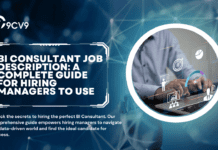Key Takeaways
- AI-driven personalization and cloud scalability are transforming 360-degree feedback software into essential tools for employee development and performance management in 2025.
- User-centric design, seamless integration with HR systems, and robust anonymity features are critical factors driving adoption across global enterprises and SMEs.
- Compliance with regulations like GDPR and CCPA and investment in cybersecurity are now fundamental requirements, influencing vendor selection and platform trustworthiness.
In an era where employee performance, leadership development, and continuous feedback loops have become strategic business imperatives, the 360 degree feedback software market in 2025 is undergoing a transformative evolution. As organizations across industries navigate increasingly complex work environments, the need for multidimensional, real-time performance evaluation tools has never been more critical. The traditional annual review is rapidly becoming obsolete, replaced by dynamic, data-driven systems that empower employees, enhance manager effectiveness, and foster organizational transparency. This shift is not merely technological—it’s cultural, operational, and deeply strategic.
Also, check out our past guide on the 7 Top and Amazing 360 Degree Feedback Software Tools For 2024.

At the heart of this transformation lies 360 degree feedback software: digital platforms that gather confidential, anonymous feedback from an employee’s peers, subordinates, supervisors, and even external stakeholders like clients or vendors. These systems offer a comprehensive view of individual performance, behavioral competencies, and leadership potential—allowing for more holistic talent management. In 2025, this market is not just growing; it is maturing, diversifying, and integrating with broader ecosystems of performance management, employee engagement, and HR analytics.
Several factors are shaping the trajectory of this software segment in 2025. First, the widespread adoption of hybrid and remote work has challenged conventional supervision and performance monitoring practices, creating demand for scalable and objective feedback tools. Second, the rise of AI and machine learning is enhancing the analytical capabilities of 360 degree feedback platforms, enabling real-time sentiment analysis, predictive performance insights, and automated development recommendations. Third, a generational shift in the workforce—led by Millennials and Gen Z—has elevated the importance of continuous feedback, career growth, and transparent communication, further accelerating the use of these tools.
Moreover, regulatory pressures around diversity, equity, and inclusion (DEI) are compelling enterprises to examine bias in traditional performance assessments. 360 degree feedback systems—when designed ethically and deployed properly—can help mitigate these biases by incorporating a wider range of perspectives and reducing over-reliance on top-down evaluations. This aligns with a broader shift towards employee-centric cultures where psychological safety, empowerment, and shared accountability are emphasized.
In 2025, the competitive landscape of the 360 degree feedback software market is also intensifying. A growing number of startups are entering the space with niche, highly customizable, or industry-specific offerings, while established players are expanding their features through integration with enterprise HR suites and talent development platforms. Cloud-native deployment, mobile accessibility, multilingual support, and seamless API integrations with learning management systems (LMS), performance management platforms, and communication tools are no longer optional—they’re expected. Organizations are now prioritizing solutions that not only gather feedback but also translate it into actionable insights that drive development, align with business KPIs, and contribute to strategic workforce planning.
This blog explores the current state of the 360 degree feedback software market in 2025, examining key trends, growth drivers, technological innovations, top vendors, implementation challenges, and strategic opportunities. Whether you’re an HR leader seeking to enhance your performance management strategy, a technology buyer evaluating feedback platforms, or a business strategist exploring talent transformation, this comprehensive analysis will provide you with the insights needed to understand the evolving landscape of 360 degree feedback tools in today’s workplace.
As we delve deeper, we’ll uncover how organizations are leveraging 360 degree feedback to build resilient leadership pipelines, boost employee engagement, support continuous learning, and foster a culture of constructive dialogue. The future of performance feedback is here—and it’s multidimensional, intelligent, and aligned with the changing fabric of work in 2025.
Before we venture further into this article, we would like to share who we are and what we do.
About 9cv9
9cv9 is a business tech startup based in Singapore and Asia, with a strong presence all over the world.
With over nine years of startup and business experience, and being highly involved in connecting with thousands of companies and startups, the 9cv9 team has listed some important learning points in this overview of The State of the 360 Degree Feedback Software Market in 2025.
If your company needs recruitment and headhunting services to hire top-quality employees, you can use 9cv9 headhunting and recruitment services to hire top talents and candidates. Find out more here, or send over an email to [email protected].
Or just post 1 free job posting here at 9cv9 Hiring Portal in under 10 minutes.
The State of the 360 Degree Feedback Software Market in 2025
- A Strategic Industry Outlook
- Market Overview: Valuation and Global Dynamics
- Key Market Trends
- Core Growth Drivers
- Target Audience Breakdown and Market Segmentation
- Competitive Landscape
- User Reviews and Sentiment Analysis
- Pricing and Monetization Models
- Regulatory and Security Considerations
- Opportunities and Challenges
- Forecast and Strategic Outlook
- Strategic Recommendations and Industry Insights
1. A Strategic Industry Outlook
Overview: Entering a New Era of Performance Intelligence
- The 360 degree feedback software market in 2025 stands at the intersection of digital transformation, workforce evolution, and data-driven leadership development.
- As enterprises pivot toward agile and employee-centric operating models, performance management systems are evolving from rigid, top-down mechanisms into dynamic ecosystems of feedback and growth.
- The year 2025 marks a critical juncture where HR technology becomes not only a support function but a strategic enabler of business performance.
Market Valuation and Growth Trajectory
| Metric | Value |
|---|---|
| Market Size (2025) | USD 1.23 Billion |
| Projected Market Size (2032–2033) | USD 2.49–3.5 Billion |
| CAGR (2025–2033) | 8% to 11% |
| Leading Region (2025) | North America |
| Fastest-Growing Region | Asia-Pacific |
- The global 360 degree feedback software market is exhibiting robust, sustained growth driven by a combination of:
- Increasing demand for talent intelligence platforms
- Technological innovation in AI/ML-based feedback analysis
- Cultural shifts toward transparency, equity, and accountability in performance review processes
Core Drivers Behind the Market Expansion
1. Workforce Transformation
- The rise of hybrid and remote work has permanently altered how teams collaborate, supervise, and evaluate performance.
- Organizations now demand scalable, cloud-based solutions capable of supporting distributed teams and asynchronous communication.
- Real-time, 360-degree input is considered essential to managing remote leadership, peer accountability, and team-based performance metrics.
2. AI-Powered Feedback Intelligence
- Artificial Intelligence and Machine Learning are now embedded in most leading platforms, enabling:
- Sentiment analysis to evaluate tone and language in feedback
- Predictive performance insights to identify potential leadership or risk areas
- Automated coaching recommendations customized for individuals
3. Cultural and Generational Shifts
- Younger generations (Millennials and Gen Z) demand more frequent, transparent, and meaningful feedback loops.
- There is a strong organizational push toward diversity, equity, and inclusion (DEI), which requires more holistic and multi-perspective review mechanisms.
- Traditional annual appraisals are being phased out in favor of continuous performance development models.
Key Market Trends Reshaping 360 Feedback Systems
| Trend | Impact |
|---|---|
| Real-Time Continuous Feedback | Replaces outdated annual reviews; encourages timely growth interventions |
| Integration with HRIS & LMS | Enables unified performance and learning pathways |
| Cloud-Native Architecture | Facilitates remote access, scalability, and lower total cost of ownership |
| Mobile-First User Interfaces | Promotes participation across generations and global teams |
| Multilingual & Localization Capabilities | Supports international workforce feedback with cultural nuance |
| API Interoperability | Encourages plug-and-play into enterprise systems like Slack, Teams, SAP |
Opportunities and Innovation Frontiers
1. Untapped Potential in Emerging Markets
- Regions such as Southeast Asia, Latin America, and parts of Africa are experiencing rapid digitization of HR systems.
- These markets are showing increased interest in performance tools that align with global benchmarks while catering to local workforce structures.
2. AI-Based Personalized Development Plans
- Future-ready software platforms now offer customized learning paths based on:
- Aggregate behavioral feedback
- Role-specific competencies
- Longitudinal performance data
3. DEI-Driven Evaluations
- Feedback tools are increasingly being aligned with organizational DEI frameworks.
- These tools help reduce rater bias by collecting feedback from diverse stakeholder perspectives, including cross-functional peers and clients.
Challenges Facing the Market in 2025
| Challenge | Details |
|---|---|
| Data Privacy & Compliance | Adhering to regulations like GDPR, CCPA, and regional data localization laws |
| Integration with Legacy Systems | Difficulty in aligning with outdated HR or ERP systems |
| Feedback Quality Assurance | Ensuring that collected input is constructive, objective, and actionable |
| User Resistance & Adoption | Change management remains a key hurdle during software rollout |
| Analytics Complexity | Interpreting multidimensional data without overwhelming users |
Strategic Considerations for Stakeholders
For Enterprises and HR Leaders
- Define Clear Objectives: Understand whether the tool will be used for leadership development, performance improvement, or succession planning.
- Prioritize Usability and Adoption: Choose platforms with intuitive interfaces and integrated training modules.
- Leverage AI Insights: Select solutions with advanced analytics to guide actionable outcomes rather than generic reports.
- Ensure Feedback Quality: Use moderation tools or AI to filter biased or non-constructive responses.
For Software Providers
- Innovate Continuously: Invest in AI, behavioral analytics, and real-time engagement features.
- Enhance Integrations: Ensure seamless compatibility with third-party systems (HRIS, LMS, CRM).
- Focus on Design & UX: Provide accessible, inclusive interfaces adaptable across devices and user personas.
- Compliance-First Approach: Embed legal and ethical frameworks into system architecture for trust-building.
Conclusion: A Market on the Brink of Intelligent Transformation
- The 360 degree feedback software market in 2025 is far more than a sub-segment of performance management—it is a catalyst for leadership excellence, cultural transparency, and data-informed workforce transformation.
- As organizations increasingly prioritize employee development, retention, and agility, the adoption of intelligent, holistic feedback systems is set to become an operational norm rather than a competitive edge.
- By aligning technological capabilities with evolving organizational expectations, both software vendors and adopters stand to reap long-term value across industries and geographies.
2. Market Overview: Valuation and Global Dynamics
The global 360 degree feedback software market in 2025 is positioned at a pivotal moment in its lifecycle, moving beyond early adoption and entering a phase of sustained global expansion. As organizations increasingly embrace data-driven talent management and performance transparency, the demand for multidimensional employee evaluation tools is growing at an unprecedented pace. This section presents a comprehensive analysis of the market’s size, growth trajectory, and regional dynamics, with insights supported by multiple forecasts from industry sources.
Global Market Size and Forecast: A Rapidly Expanding Sector
The 360 degree feedback software market is experiencing robust growth, underpinned by structural trends in workforce management, HR digitization, and leadership development.
Key Highlights:
- The global market valuation in 2025 is projected at USD 1.23 billion, up from USD 1.11 billion in 2024, demonstrating clear upward momentum.
- Multiple industry forecasts indicate a Compound Annual Growth Rate (CAGR) ranging between 8.29% and 11.40% across various forecast periods, reflecting strong and sustainable demand.
- By 2032, the market is expected to surpass USD 2.49 billion, with potential upper estimates reaching USD 3.62 billion by 2033.
Table 1: Global 360 Degree Feedback Software Market Forecast (2024–2033)
| Year | Market Valuation (USD Billion) | CAGR (%) | Forecast Period |
|---|---|---|---|
| 2024 | 1.11 | – | – |
| 2025 | 1.23 | – | – |
| 2030 | 2.14 | 10.6% | 2024–2032 |
| 2032 | 2.49 | 10.6% | 2024–2032 |
| 2032 | 2.29 | 11.37% | 2025–2032 |
| 2032 | 3.62 | 10.5% | 2023–2032 |
| 2033 | 2.30 | 8.29% | 2025–2033 |
| 2033 | 3.50 | 11.40% | 2024–2033 |
Strategic Interpretation:
- Although forecast values vary across research sources, the overarching narrative is consistent: the market is experiencing long-term, compounding growth.
- These estimations underscore the strategic necessity for businesses to adopt scalable, data-integrated feedback tools as part of their enterprise HR ecosystems.
Regional Market Distribution: Leadership and Emerging Frontiers
North America: The Global Market Leader
- Continues to dominate the global market with a 31.53% share in 2024, following approximately 35% in 2023.
- The United States alone is projected to contribute USD 301.5 million to the global total by 2032.
- Key drivers:
- Mature adoption of advanced HR technologies.
- High concentration of knowledge workers and contract-based professionals (e.g., doctors, engineers, scientists).
- Significant budget allocations toward HR transformation and employee development platforms.
Europe: Stable Maturity in Second Position
- Estimated to maintain a 25% share of the global market in 2024.
- Demand is driven by:
- Evolving labor regulations promoting inclusive feedback systems.
- Organizational emphasis on structured performance evaluation and talent retention.
- High digital readiness among enterprises.
Asia Pacific: The Fastest-Growing Market
- Holds a 20% market share in 2024, with exponential growth expected through 2033.
- Growth is fueled by:
- Rapid industrialization in countries like India, China, Indonesia, and Vietnam.
- Increasing preference for mobile-friendly, cloud-based HR platforms.
- Strong government and enterprise push for digital HR transformation.
- Represents a greenfield opportunity for vendors aiming to deliver:
- Scalable SaaS-based feedback systems
- Local language support and cultural customization
- Cost-effective deployment for SMEs and enterprises alike
Latin America and Middle East: Emerging Contenders
- These regions are witnessing increasing interest in feedback and performance analytics due to:
- Organizational push to professionalize HR processes.
- Rising demand for leadership assessment tools in multinational and large domestic firms.
- Adoption may be slower but consistent, offering mid-to-long term potential for market expansion through partnerships and education-based selling strategies.
Regional Market Dynamics Summary Table
| Region | 2024 Market Share (%) | Key Drivers | Strategic Opportunity |
|---|---|---|---|
| North America | 31.53% | High-tech adoption, flexible work models, advanced workforce structures | AI-enhanced integrations, enterprise-level tools |
| Europe | ~25% | Regulatory compliance, structured HR systems, employee wellbeing initiatives | DEI-aligned feedback systems |
| Asia Pacific | 20% | Digital HR acceleration, industrial expansion, mobile-first HR ecosystems | Localized cloud SaaS models |
| Latin America | <10% | Enterprise transformation, MNC-led digitization | Partnership-led market entry |
| Middle East | <10% | Government modernization, investment in professional development | Scalable tools for leadership feedback |
Conclusion: Strategic Takeaways for 2025 and Beyond
- The 360 degree feedback software market in 2025 is not only expanding in value but also maturing in complexity, regional diversity, and technological sophistication.
- The market’s strength lies in its alignment with broader workforce trends, including:
- Digital transformation
- Leadership development
- Continuous feedback culture
- North America continues to lead in market volume and innovation, but Asia Pacific presents the highest potential for volume-based growth and vendor expansion.
- To capture long-term value, solution providers must adopt region-specific go-to-market strategies while enterprises must focus on aligning feedback tools with strategic HR objectives.
3. Key Market Trends
The global 360 degree feedback software landscape in 2025 is undergoing rapid transformation, driven by the convergence of digital innovation, workforce modernization, and a heightened focus on employee development. Several critical trends are reshaping the market, pushing software vendors and enterprises alike to innovate, integrate, and personalize performance feedback processes at scale.
Integration of Artificial Intelligence (AI) and Machine Learning (ML)
AI and ML are redefining the very foundations of the 360 degree feedback ecosystem in 2025, transitioning platforms from static evaluation tools to intelligent performance enablement engines.
Key Highlights:
- Automated Data Interpretation:
- AI eliminates subjectivity by detecting tone, bias, and sentiment in qualitative feedback.
- Algorithms transform open-ended comments into structured, actionable data.
- Bias Reduction and Fairness Optimization:
- ML models adjust for rater bias, cultural nuance, and context sensitivity.
- Increases the credibility and fairness of the feedback loop.
- Predictive Analytics:
- AI forecasts performance trends, burnout risk, and high-potential individuals.
- Supports proactive succession planning and leadership development.
- Personalized Development Insights:
- Systems create tailored coaching recommendations and learning pathways based on multi-rater input and performance gaps.
- Drives individualized growth in alignment with business objectives.
Leading Platforms Integrating AI:
| Platform | AI Features | Core Differentiator |
|---|---|---|
| Qualtrics | Predictive sentiment analysis, NLP-based feedback | Enterprise-grade analytics suite |
| Leapsome | AI-driven competency mapping and growth suggestions | OKR and performance integration |
| SurveySparrow | Real-time AI feedback synthesis | Conversational feedback interface |
| Synergita | AI goal alignment, behavior tracking | Integrated recognition & rewards |
| TheySaid | Intelligent engagement tracking | Agile performance feedback mechanisms |
Transition to Continuous and Real-Time Feedback Loops
The feedback cycle in 2025 has shifted from annual appraisals to a continuous flow of real-time performance insights, enabling agile decision-making and improved responsiveness.
Key Trends Driving This Shift:
- Increased Frequency of Check-ins:
- Organizations are embedding weekly or monthly feedback touchpoints via digital tools.
- Promotes iterative improvement and quick course correction.
- Cultural Shift Toward Growth Mindsets:
- Continuous feedback reinforces employee development and accountability.
- Encourages open communication, peer recognition, and coaching moments.
- Real-Time Sentiment & Behavior Tracking:
- Live dashboards allow managers to monitor engagement and team morale.
- Immediate access to employee perception data drives better leadership responses.
Notable Platforms Embracing Real-Time Feedback:
| Platform | Key Real-Time Features | Feedback Frequency |
|---|---|---|
| 15Five | Weekly check-ins, pulse surveys, recognition | Weekly |
| Lattice | Always-on feedback, 1:1 planning modules | Ongoing |
| SurveySparrow | Feedback bots, live analytics dashboards | Real-time |
Proliferation of Cloud-Based Feedback Systems
Cloud-native solutions have become the dominant deployment model in 2025, enabling scalability, flexibility, and cost efficiency.
Growth Statistics:
- Over 68% of 360 degree feedback software was delivered via cloud-based models in 2024.
- The cloud feedback ecosystem is expanding at a CAGR of 12.5%, reflecting strong demand for accessible and scalable tools.
Key Drivers:
- Anytime, Anywhere Access:
- Cloud-based systems support remote and hybrid workforce models.
- Cost-Effectiveness:
- Lower upfront investments, zero hardware dependency.
- AI and Data Integration Compatibility:
- Cloud architecture provides the computational backbone for AI-powered analytics and big data processing.
Advantages of Cloud-Based 360 Degree Feedback Systems
| Feature | Cloud-Based Systems | Legacy On-Premise Systems |
|---|---|---|
| Accessibility | Global access from any device | Location-dependent |
| Maintenance | Vendor-managed | Internal IT resources required |
| Scalability | Instantly scalable based on user volume | Complex hardware upgrades needed |
| Cost Structure | Subscription (OpEx) | High initial CapEx |
| AI/ML Integration | Seamless | Often limited or incompatible |
Integration with the Broader HR Tech Ecosystem
In 2025, 360 degree feedback systems are no longer standalone platforms—they are core components of end-to-end HR technology stacks.
Why Integration Matters:
- Unified Talent Management:
- Seamless integration with HRIS, performance tools, LMS, and communication platforms eliminates data silos.
- Operational Efficiency:
- Reduces manual data input, standardizes workflows, and enables automation.
- Holistic Employee Profiling:
- Aggregated data from multiple HR systems paints a complete picture of performance, engagement, and career trajectory.
Systems Frequently Integrated with 360 Feedback Platforms:
- Slack, Microsoft Teams – Communication channels for instant feedback
- Workday, SAP SuccessFactors – Enterprise-grade HRIS integrations
- Asana, Datalligence, Leapsome – OKRs and goal tracking integration
360 Feedback Integration Matrix
| Function | System Type | Integration Value |
|---|---|---|
| HR Administration | HRIS | Centralized employee record syncing |
| Goal Management | OKR Tools | Alignment of feedback with business objectives |
| Learning & Development | LMS | Mapping feedback to upskilling programs |
| Communication | Messaging Platforms | Encouraging real-time peer-to-peer recognition |
| Analytics & Reporting | BI Tools | Deeper data insights and cross-platform reporting |
Emphasis on Personalization and Actionable Development Insights
Modern enterprises demand more than generic evaluations—they seek feedback that drives measurable improvement. In 2025, personalization is central to the software’s strategic value.
Why Personalization Matters:
- Tailored Learning Paths:
- Platforms now generate learning recommendations based on role, rating trends, and competency gaps.
- Role-Specific Feedback:
- Systems can segment insights by job family, seniority, or leadership potential.
- Custom Dashboards:
- Individual and managerial views are uniquely tailored, focusing on strengths, opportunities, and behavioral trends.
Actionable Feedback Model in 2025
| Feedback Component | Traditional Method | Modern Personalized Approach |
|---|---|---|
| Delivery Frequency | Annual appraisal | Continuous, role-based pulse feedback |
| Data Format | Numerical ratings | Rich qualitative + AI-interpreted insights |
| Outcome | Generic performance grade | Actionable coaching plan and career growth trajectory |
Conclusion: From Insight to Impact
The 360 degree feedback software market in 2025 is being fundamentally transformed by intelligent automation, real-time responsiveness, and strategic integrations. These trends are not only improving user experience but also elevating the role of feedback in driving workforce strategy, organizational agility, and leadership development.
As the market continues to mature, vendors must focus on:
- Enhancing cross-platform interoperability
- Investing in ethical AI
- Delivering value through tailored, context-aware insights
For organizations, the mandate is clear: adopt platforms that deliver continuous, connected, and personalized feedback experiences—because in 2025, performance management is no longer about evaluation; it’s about enablement, growth, and sustained excellence.
4. Core Growth Drivers
The upward trajectory of the 360 degree feedback software market in 2025 is not incidental—it is underpinned by a constellation of powerful macroeconomic, organizational, and technological forces. These growth catalysts are propelling the sector forward by enhancing demand, increasing utility, and expanding global adoption.
Organizational Emphasis on Employee Development, Engagement, and Retention
As global competition for top-tier talent intensifies, organizations are increasingly recognizing that their most valuable asset is human capital. In response, a paradigm shift is underway—moving from reactive, annual performance reviews toward proactive, developmental feedback ecosystems.
Key Drivers:
- Strategic Focus on Talent Growth:
- 360 degree feedback is being leveraged not just to assess past performance, but to facilitate continuous learning and improvement.
- Businesses are using multi-source feedback to uncover individual skill gaps and leadership potential.
- Retention as a Cost-Saving Imperative:
- Reducing attrition through targeted development lowers the financial strain of hiring and training new employees.
- Companies are aligning feedback tools with career progression pathways to drive long-term loyalty.
- Positive Organizational Culture:
- Real-time recognition and feedback reinforce a culture of transparency and trust.
- Platforms help reinforce values and behaviors aligned with organizational goals.
Strategic Outcome:
Increased investment in feedback software as a high-ROI solution for improving employee performance, engagement, and longevity.
The Rise of Remote and Hybrid Work as a Market Accelerator
With the workforce increasingly decentralized, enterprises must now rely on robust digital infrastructure to maintain consistency in feedback, collaboration, and performance evaluation.
Key Catalysts:
- Geographic Dispersion of Teams:
- Traditional in-office feedback has become obsolete; digital systems are required for real-time, cross-border communication.
- Remote Performance Monitoring:
- Feedback tools provide structured visibility into employee contributions, regardless of physical location.
- Digital Inclusivity:
- Cloud-based platforms ensure equitable access for remote, hybrid, and on-site employees, preserving fairness in evaluations.
Strategic Outcome:
Remote work has converted feedback software from an enhancement to a necessity—accelerating adoption across all organizational levels.
Demand for Bias-Free, Objective, and Multi-Rater Evaluation
Conventional performance appraisal systems have long suffered from subjectivity, inconsistency, and lack of credibility. The 360 degree model corrects these flaws by embedding diverse stakeholder perspectives into the review process.
Key Drivers:
- Comprehensive Performance View:
- Incorporates feedback from supervisors, peers, subordinates, and external partners for a well-rounded evaluation.
- Reduction of Cognitive Biases:
- AI-based analysis flags biased language or rating patterns, promoting equity and neutrality.
- Increased Credibility of Feedback:
- Employees perceive feedback as more valid when derived from multiple, varied perspectives.
Strategic Outcome:
Enhances organizational trust and adoption rates by improving the fairness, accuracy, and acceptance of performance reviews.
Technological Evolution in AI and Predictive Analytics
Innovation in artificial intelligence, natural language processing (NLP), and data analytics is transforming feedback software from administrative tools into intelligent, forward-looking strategic assets.
Key Capabilities:
- AI-Driven Custom Feedback:
- Recommends development plans based on behavioral insights and performance trajectories.
- Predictive Modeling:
- Forecasts future potential, engagement risks, and succession planning needs.
- Natural Language Insights:
- Extracts sentiment and intent from qualitative feedback for deeper analysis.
Strategic Outcome:
Technology enhances efficiency and depth, making feedback more personalized, contextual, and action-oriented—thus increasing adoption and satisfaction.
Enterprise Demand for Streamlined Talent Management Systems
As operational costs and HR complexity increase, organizations are seeking integrated performance management systems that can consolidate data, reduce inefficiencies, and inform smarter workforce decisions.
Key Trends:
- Convergence with Talent Management Platforms:
- Feedback systems are now part of broader HR tech ecosystems, streamlining goal-setting, performance tracking, and L&D alignment.
- Operational Efficiency Mandate:
- Automation reduces HR admin workload and accelerates feedback cycles.
- Cost Containment:
- Improved retention and targeted upskilling reduce recruitment, onboarding, and training expenditures.
Strategic Outcome:
360 degree feedback tools have transitioned from discretionary HR tools to mission-critical infrastructure for enterprise workforce strategy.
Table 2: Major Growth Drivers and Their Strategic Impact in 2025
| Growth Driver | Description | Strategic Impact on Market |
|---|---|---|
| Employee Development, Engagement & Retention | Prioritizing learning, satisfaction, and long-term retention over short-term productivity gains | Drives sustained investment in developmental feedback tools |
| Rise of Remote & Hybrid Work Models | Global and distributed teams require consistent digital evaluation tools | Increases urgency for adoption across industries |
| Demand for Objective, Bias-Reduced Evaluations | Need for fair, holistic assessments from multiple stakeholder groups | Enhances credibility and acceptance of feedback systems |
| Technological Advancements (AI, Analytics) | Use of intelligent algorithms for deeper, customized, and predictive insights | Improves effectiveness, efficiency, and personalization |
| Need for Integrated & Streamlined Talent Management | Rising complexity in HR operations calls for unified feedback and talent development platforms | Repositions feedback tools as foundational to enterprise workforce management |
Conclusion: A Convergence of Strategy, Tech, and Talent
The growth of the 360 degree feedback software market in 2025 is not driven by a single factor but by a converging wave of strategic business priorities, cultural shifts, and breakthrough technologies. Organizations are no longer viewing feedback as a reactive, administrative activity—but as a proactive, strategic lever for organizational success.
As feedback systems become embedded in core HR operations, vendors that offer scalable, intelligent, and user-friendly platforms will gain competitive advantage. Meanwhile, businesses that prioritize comprehensive, data-driven feedback will benefit from a more engaged, better-aligned, and future-ready workforce.
5. Target Audience Breakdown and Market Segmentation
A comprehensive understanding of the 360 degree feedback software market requires in-depth analysis across various dimensions, including solution types, industry verticals, deployment models, organizational sizes, and geographical distributions. These segmentation parameters not only define the present market landscape but also provide critical insights into growth opportunities and strategic priorities for vendors and buyers alike.
Segmentation by Solution Type: Installed vs. Web-Based Platforms
The classification of 360 degree feedback solutions by deployment type reflects a broader shift in enterprise IT preferences, with cloud-first strategies accelerating across industries.
Key Observations:
- Web-Based (Cloud) Solutions:
- Commanded over 68% of the global market in 2024.
- Highly favored due to:
- Scalable architecture.
- Remote access capabilities.
- Faster deployment and configuration cycles.
- Reduction in maintenance and IT overhead.
- Users report a 33% higher satisfaction rate compared to installed counterparts.
- Installed (On-Premise) Solutions:
- Now occupy a niche market role, comprising less than 32% of total share.
- Still preferred by certain security-sensitive sectors with stringent compliance needs (e.g., finance, defense).
- Considered less agile and more resource-intensive.
The overwhelming shift toward cloud solutions underscores enterprises’ need for flexible, cost-effective tools that support hybrid work and rapid scalability.
Segmentation by Industry: Corporate Dominance with Emerging Sector Adoption
360 degree feedback platforms are utilized across a diverse range of industries, though adoption levels and use cases vary considerably based on organizational goals and digital maturity.
Core Industry Segments:
- Corporate Sector:
- Held approximately 74% of market share in 2024.
- Dominant demand for:
- Complex integrations (e.g., OKRs, LMS).
- Multi-level reporting capabilities.
- Leadership development and succession planning tools.
- Major consumers: large multinationals, consulting firms, and tech giants.
- Education Sector:
- Accounted for 15% of market share in 2024.
- Growth of 22% from 2022 to 2024 indicates rising demand in:
- Faculty assessment.
- Student experience tracking.
- Academic administration evaluations.
- Public Sector & Non-Profits:
- Represented 11% of total usage.
- Emphasis on:
- Internal collaboration.
- Citizen-centric service evaluation.
- Skills training in government and NGO environments.
- Emerging Verticals (IT, Healthcare, BFSI, Retail):
- IT and Healthcare are particularly advanced in adoption due to:
- High demand for agile leadership.
- Structured frameworks for performance improvement.
- Compliance with evolving industry-specific standards.
- IT and Healthcare are particularly advanced in adoption due to:
Segmentation by Deployment Mode: The Accelerating Cloud Migration
While legacy on-premise installations still exist in broader customer engagement solutions, the 360 degree feedback market is rapidly aligning with cloud-native architectures.
Deployment Insights:
- Cloud-Based Solutions:
- Experiencing 12.5% CAGR, making them the primary engine of future growth.
- Key benefits:
- Minimal infrastructure costs.
- Seamless updates and scalability.
- Integrated AI analytics for personalized development.
- On-Premise Solutions:
- Comprising 70.8% of the broader customer engagement systems in 2024.
- Gradual decline forecasted as cloud compliance and security improve.
- Still utilized by organizations with legacy infrastructure and restricted data environments.
Segmentation by Organization Size: Enterprise Leaders and SME Upsurge
Feedback system requirements vary significantly by enterprise size, influencing the adoption rates, deployment scope, and feature complexity.
Key Segments:
- Large Enterprises:
- Accounted for 66.4% of revenue in 2024 (across broader engagement solutions).
- 2.5 times more likely to deploy multi-rater systems than SMEs.
- Characteristics:
- Complex hierarchy necessitating layered feedback loops.
- Integration with multiple HR tools (HRIS, LMS, OKRs).
- Budget flexibility for advanced customization.
- Small and Medium-Sized Enterprises (SMEs):
- Projected to grow at a 12.1% CAGR through 2030.
- Adoption grew 18% from 2022 to 2024.
- Drivers of growth:
- Emergence of affordable SaaS models.
- Need to formalize performance reviews.
- Focus on talent retention amid competitive hiring environments.
Vendors that offer intuitive, mobile-responsive, and low-maintenance feedback tools stand to capture strong market share within the SME space.
Segmentation by Region: Global Maturity and Local Momentum
Regional dynamics in the 360 degree feedback software market reflect a mix of digital maturity, enterprise size, and workforce management sophistication.
Geographical Breakdown:
| Region | Market Share (2024) | Key Highlights |
|---|---|---|
| North America | 31.53% (~35% in 2023) | Mature HR tech ecosystem; strong enterprise spend on employee engagement tools. |
| Europe | ~25% | Regulatory alignment and enterprise modernization driving adoption. |
| Asia Pacific (APAC) | ~20% | Rapid digitalization in India, China, Southeast Asia—major greenfield opportunity. |
| Latin America | Growing | Early-stage market; demand increasing in Brazil, Mexico, Colombia. |
| Middle East & Africa | Emerging | Focused on public sector transformation and national workforce development. |
Asia Pacific is expected to lead future growth, with cloud-native and mobile-first deployments gaining traction in digitally maturing economies.
Table 3: Global 360 Degree Feedback Software Market Segmentation Overview (2025)
| Segmentation Category | Sub-Segments | Market Share/Growth | Strategic Insights |
|---|---|---|---|
| Solution Type | Installed | < 32% | Declining share, limited to legacy use cases. |
| Web-Based | > 68% | Dominant due to cloud benefits, user satisfaction, and hybrid work support. | |
| Industry | Corporate | ~74% | Main segment; demands advanced analytics and integration. |
| Education | ~15% (22% growth since 2022) | Accelerated adoption via e-learning and remote faculty evaluation tools. | |
| Public Sector / Non-Profit | ~11% | Adoption driven by leadership capacity-building and internal collaboration needs. | |
| IT, Healthcare, BFSI, Retail | Varies | High adoption in IT & Healthcare due to workforce complexity and compliance mandates. | |
| Deployment Mode | On-Premise | 70.8% (broader market) | Legacy systems; facing obsolescence in favor of agile cloud offerings. |
| Cloud-Based | 12.5% CAGR | Future-proof model; preferred across sectors for cost, scalability, and automation. | |
| Organization Size | Large Enterprises | 66.4% (2024) | Major revenue contributors; demand comprehensive, customizable platforms. |
| SMEs | 12.1% CAGR (18% growth 2022–2024) | High-growth market; prefers lightweight, flexible, and budget-conscious solutions. | |
| Region | North America | ~35% (2023) | Tech-forward companies, highest adoption rates. |
| Europe | ~25% | Prioritizing workforce agility and ESG-aligned talent strategies. | |
| Asia Pacific | ~20% | Surging interest; major untapped potential for mobile and AI-first feedback platforms. | |
| Latin America & MEA | Emerging markets | Government and private sector interest steadily increasing. |
Conclusion: Targeting Segments for Strategic Advantage
In 2025, successful vendors in the 360 degree feedback software market will not only adapt to evolving technological trends but also align their go-to-market strategies to the unique needs of each market segment. Understanding how preferences and challenges differ by organization size, industry, and geography is essential for capturing and retaining market share in this dynamic and competitive landscape.
6. Competitive Landscape
The global 360 degree feedback software market is becoming increasingly competitive, driven by a blend of well-established HR technology providers and innovative niche vendors. The competitive environment reflects a rapidly evolving sector where technological sophistication, integration capabilities, and user experience design are central to vendor differentiation and customer retention.
Overview of Key Market Players and Core Solution Portfolios
Vendors in the 360 degree feedback software ecosystem are categorized into three main groups:
- Comprehensive HR platforms with integrated feedback systems
- Specialist feedback and performance management providers
- Hybrid experience management and people analytics platforms
Notable Industry Leaders and Their Core Capabilities:
| Vendor | Core Strengths | Product Differentiators |
|---|---|---|
| Qualtrics | Advanced analytics, customizable 360 review cycles, integrated experience management. | Renowned for its real-time reporting, benchmarking, and scalability across large enterprises. |
| Lattice | Unified platform for performance reviews, engagement surveys, compensation management, and development planning. | Known for intuitive UI and strategic alignment tools. Highly suitable for enterprises seeking modular HRIS. |
| Culture Amp | Emphasis on people analytics and employee engagement. | Combines 360 feedback with development-focused dashboards. Praised for ease of use and depth of insights. |
| Leapsome | Combines feedback, OKRs, learning paths, and surveys within one unified interface. | Offers AI-powered personalization and automated learning modules. Ideal for companies with growth cultures. |
| BambooHR | Broader HR suite with embedded 360 feedback functionality. | Strong all-in-one platform for SMBs; includes onboarding, compensation, and goal-setting. |
| Performly | Focus on anonymous feedback and automated visual workflows. | Unique ability to trigger actions based on feedback responses. |
| SurveySparrow | Multichannel feedback collection, customizable surveys, and conversational interfaces. | Known for real-time feedback tracking and mobile-friendly designs. |
| Peoplebox | Integrated OKRs with 360 feedback, employee engagement, and business outcome alignment. | Streamlines performance tracking with strategic business metrics. |
| SpiderGap | Designed specifically for SMEs and consultancies. | Provides out-of-the-box templates and simple visual reports. |
| Keka | Combines HRMS, payroll, and performance modules. | Gaining traction in Asia-Pacific due to affordability and localization features. |
| 15Five | Specializes in continuous feedback, check-ins, and performance coaching. | Focuses on employee engagement and weekly team alignment. |
Numerous other players such as Mercer, Cornerstone OnDemand, Primalogik, SVI, Synergita, ThriveSparrow, Hi5, Pay Compliment, and Deel also contribute actively, each targeting different verticals and organization sizes.
Competitive Strategies and Differentiation Approaches
Vendors in the 360 degree feedback software market pursue a range of competitive strategies to gain traction. These strategies reflect a mature yet innovation-driven environment where product differentiation increasingly revolves around usability, AI integration, and seamless interoperability.
Strategic Focus Areas Driving Competitive Advantage:
- Cloud-First Architecture:
- Emphasis on SaaS models with rapid deployment, multi-device access, and scalability.
- Enables frequent updates, low maintenance costs, and global accessibility.
- AI & Automation Integration:
- Use of artificial intelligence for:
- Sentiment analysis and bias detection.
- Predictive analytics to identify high-potential talent.
- Real-time generation of personalized learning and development plans.
- Use of artificial intelligence for:
- Horizontal & Vertical Platform Integration:
- Platforms like Peoplebox and Datalligence incorporate 360 feedback with:
- OKRs (Objectives & Key Results)
- Performance management workflows
- LMS (Learning Management Systems)
- Enables unified talent management under one interface.
- Platforms like Peoplebox and Datalligence incorporate 360 feedback with:
- UX/UI Optimization:
- Increasing focus on intuitive user experiences for both administrators and employees.
- Higher adoption and completion rates are strongly correlated with ease of use.
- Customization & Modularity:
- Vendors offering tailored configurations, industry-specific templates, and configurable review cycles gain favor.
- Flexibility is essential for large enterprises with complex org charts and SMEs with limited admin capacity.
As feedback becomes part of broader experience management ecosystems, vendors who connect engagement surveys, recognition programs, and career pathing to feedback data are best positioned for long-term success.
Market Dynamics: Experience Management vs. Standalone Feedback Tools
An emerging trend in the competitive landscape is the integration of 360 degree feedback within larger employee experience platforms. The presence of major players like Qualtrics and Culture Amp, traditionally known for broader analytics and engagement, illustrates that 360 feedback is no longer a siloed function.
Implications:
- Feedback is increasingly tied to:
- Employee lifecycle management.
- Organizational culture measurement.
- Strategic HR KPIs such as engagement scores and retention metrics.
- Consolidation is expected as vendors seek to expand capabilities across:
- Talent acquisition → Performance → Learning & Development → Retention
This holistic view elevates feedback from a performance evaluation mechanism to a strategic driver of business outcomes.
The Strategic Role of User-Centric Design
Design-centric platforms are rapidly outperforming feature-heavy but difficult-to-use systems. As feedback requires high participation to generate reliable insights, usability is not optional—it is foundational.
UX/UI Strategic Imperatives:
- Simplified dashboards, mobile accessibility, and multilingual support.
- Visualized results (heat maps, spider charts) for quick comprehension.
- Automated reminders, anonymous feedback options, and gamification to boost engagement.
In short, the ability to convert feedback into insight hinges not only on analytics but also on frictionless user interaction.
Market Share by Vendor: Data Gaps and Research Limitations
While several leading platforms are widely recognized for their product quality and market presence, quantitative market share data remains limited in the public domain.
Considerations:
- Most accurate figures on vendor-level market share require:
- Paid access to proprietary market intelligence databases (e.g., Gartner, IDC, MarketsandMarkets).
- Internal disclosures or investor reporting (in the case of public companies).
Available Data Insights:
- Publicly reported metrics typically include:
- Customer counts
- Retention rates
- Growth in active users
- ARR (Annual Recurring Revenue) for public SaaS vendors
For a precise breakdown of vendor-level market share by revenue, region, or industry vertical, procurement of detailed syndicated research or analyst briefings is necessary.
Summary: Key Success Levers in a Competitive Market
To succeed in the evolving 360 degree feedback software landscape of 2025, vendors must balance technological innovation with simplicity, integration with specialization, and analytics with usability. The market is moving rapidly toward intelligent, cloud-native ecosystems where feedback is not merely collected but translated into meaningful action and strategy.
7. User Reviews and Sentiment Analysis
In 2025, user feedback plays a pivotal role in evaluating the real-world effectiveness, adoption trends, and perceived value of 360-degree feedback software. Platforms such as G2, Capterra, and TrustRadius offer a wealth of qualitative and quantitative insights that reflect end-user priorities, highlight vendor performance, and expose critical functionality gaps.
Core Themes Emerging from User Feedback
A meta-analysis of thousands of user-generated reviews reveals a consistent set of evaluation criteria that influence satisfaction and retention. These factors are central to shaping market success and product roadmap decisions.
🔹 User Interface & Ease of Use
- Universally cited as the most valued feature.
- Intuitive dashboards, streamlined workflows, and minimal training requirements are key to adoption.
- Complex navigation often leads to reduced engagement, incomplete feedback cycles, and data gaps.
🔹 Customization and Flexibility
- High-value attribute for organizations with specific cultural or competency-based feedback frameworks.
- Users praise:
- Survey configurability
- Custom question banks
- Role-specific review pathways
- Some negative feedback arises when customization requires technical setup or lacks in-platform guidance.
🔹 Advanced Reporting and Actionable Analytics
- Real-time dashboards, heatmaps, and trend visualizations are highly appreciated.
- Tools that deliver “next-step recommendations” and developmental guidance increase perceived ROI.
- Overly technical reports or lack of interpretive insights are cited as deterrents to effective usage.
🔹 Integration Capabilities
- Seamless connection with HRIS, performance tools, LMS, and communication platforms like Slack is now expected.
- Poor integration or siloed data workflows significantly impact usability and long-term value.
🔹 Anonymity and Psychological Safety
- Anonymous feedback ensures authenticity, especially in hierarchical environments.
- Platforms that offer robust data privacy, blind reviews, and non-traceable feedback collection are preferred.
- Lack of anonymity is viewed as a critical flaw, leading to “overly safe” and unhelpful responses.
🔹 Vendor Support and Onboarding
- Strong implementation support, dedicated success managers, and training modules receive favorable reviews.
- Poor after-sales support is frequently associated with churn, especially among SMEs.
Performance Review of Leading Platforms: Ratings, Strengths, and Limitations
Top-rated vendors are differentiated by their ability to balance depth of features with usability and support. Below is a comparative assessment of three leading platforms using verified review data from Capterra and G2.
Table 4: Comparative Matrix of Leading 360 Degree Feedback Platforms (2025)
| Software | Capterra Rating | G2 Rating | Key Advantages | Notable Limitations | Best Fit For |
|---|---|---|---|---|---|
| Leapsome | 4.6 / 5 | Not specified | – AI-driven feedback insights – Competency-linked learning modules – Flexible review cycles – Built-in development plans – Engagement surveys | – Limited offline access – Cost may be restrictive for startups and small enterprises | Growth-focused companies with L&D needs |
| Lattice | 4.5 / 5 | 4.7 / 5 | – Real-time feedback tools – Comprehensive career and goal tracking – Integrates engagement & performance – Visually intuitive UI | – Mobile version lacks complete feature parity – Steep learning curve for first-time users | Large enterprises with mature HR structures |
| Culture Amp | Not listed | Not listed | – Holistic employee experience design – Deep people analytics – Multi-layer engagement + performance tracking – Consistent UX across devices | – High pricing tier – Customization limitations – Complex third-party integrations | Mid to large organizations focused on culture |
Note: Ratings are based on user-reported data as of Q1–Q2 2025. Actual scores may vary depending on sample size and review recency.
Platform-Specific Sentiment Trends (Qualitative Insights)
Leapsome
- Frequently lauded for the integration of performance and learning into a single feedback cycle.
- HR teams appreciate its data-backed recommendations for individualized development plans.
- Common critique: Offline limitations affect usability during fieldwork or low-connectivity environments.
Lattice
- Regarded as a complete HR performance ecosystem.
- Reviewers value its goal alignment tools and visual tracking for OKRs.
- Challenges include a mobile app that lacks full functionality, affecting field or hybrid teams.
Culture Amp
- Applauded for its strategic focus on employee experience and retention.
- Particularly useful for CHROs and people analytics professionals.
- High cost and customization hurdles mentioned as potential barriers for mid-sized companies.
Review Platform Dynamics: G2 vs. Capterra
| Platform | Review Style | User Incentives | Strengths | Limitations |
|---|---|---|---|---|
| G2 | Analytical, feature-focused | Often incentivized | Deeper product comparisons; advanced quadrant system | Slower load times on mobile; formatting limitations |
| Capterra | Brief summaries, broader participation | Volume-based reviews | Easy to navigate; collects input from a wider audience | Less depth in technical analysis |
Both platforms maintain review validation protocols. However, professionals should cross-reference multiple sources to ensure accurate software evaluation.
Conclusion: Sentiment-Driven Product Evolution
The 360-degree feedback software landscape in 2025 is heavily influenced by real-world user sentiment, which directly informs vendor priorities around:
- UI/UX optimization
- Feedback interpretability
- Customizability at scale
- Integration and system openness
- Support experience during onboarding and beyond
Vendors who systematically address recurring pain points—while enhancing usability and feature coherence—are best positioned to lead in a feedback-driven future.
8. Pricing and Monetization Models
As organizations of varying sizes and industries increasingly prioritize holistic performance management, vendors of 360-degree feedback software have adopted a spectrum of pricing strategies. These strategies are designed to accommodate diverse operational needs, technological readiness, and budget constraints across enterprise segments.
Dominant Pricing Structures in 2025
The monetization models in the 360-degree feedback software landscape reflect a growing emphasis on scalability, transparency, and cost alignment with value delivery.
Key Pricing Models:
- Per User / Per Employee / Per Subject (Subscription-Based)
- The most prevalent pricing structure across the market.
- Allows businesses to align costs directly with headcount or usage volume.
- Facilitates predictable budgeting and scalability, particularly in cloud-based deployments.
- Tiered Subscription Plans (Feature-Based Pricing)
- Vendors segment offerings into basic, professional, and enterprise tiers.
- Higher tiers typically include advanced analytics, integrations, white-labeled environments, and dedicated support.
- Freemium & Free Trial Offers
- Widely adopted as customer acquisition strategies.
- Tools like PeopleGoal, Leapsome, and ThriveSparrow offer limited-time trials.
- Providers such as SpiderGap and SurveySparrow offer forever-free versions for individuals or micro-teams.
- Custom Enterprise Pricing
- Tailored for large-scale implementations or complex use cases.
- Often includes API access, SSO integrations, custom reporting, and dedicated client success teams.
Strategic Advantages of the Dominant Models:
- Encourages incremental adoption, especially in SMEs.
- Promotes higher user satisfaction, as pricing grows with tangible value and usage.
- Enables vendors to diversify revenue streams across markets with differing financial capacities.
Comparative Pricing Overview: Key Vendors (2025)
The table below presents a curated list of vendors, highlighting their entry-level pricing, billing model, and core value proposition.
Table 5: Illustrative Pricing Structures of Leading 360-Degree Feedback Platforms (2025)
| Software Provider | Pricing Model | Starting Price (USD) | Core Value Proposition |
|---|---|---|---|
| ThriveSparrow | Per employee / month | $2 / employee | Affordable team engagement and customizable 360° feedback with analytics. |
| Pay Compliment | Per user / month | $4 / user | Real-time feedback loops with motivational design and employee experience analytics. |
| PeopleGoal | Per user / month | $4 / user | Integrated 360° feedback and performance alignment for growing organizations. |
| Justlogin | Per user / month | $5 / user | All-in-one cloud HR suite with feedback, leave, and payroll functionalities. |
| Peoplebox | Per person / month | $7 / person | Unified OKR tracking and performance feedback dashboard. |
| iRevü Engagiant Software | Flat monthly subscription | $7 / month | Mobile-first platform for real-time feedback and continuous performance management. |
| Leapsome | Per user / month | $8 / user | AI-backed learning pathways, competency frameworks, and integrated feedback tools. |
| SurveySparrow | Monthly subscription | $19 / month | Multi-rater feedback with conversational UI and real-time insight capture. |
| Deel (Engage Module) | Per employee / month | $20 / employee | Employee engagement and performance tracking as part of Deel’s broader HR ecosystem. |
| Psyft | Per subject | $25 / subject | In-depth skills analysis and benchmarked performance reporting. |
| Zonka Feedback | Monthly subscription | $49 / month | Advanced survey builder with analytics for real-time employee sentiment tracking. |
| Qualaroo | Monthly subscription | $69 / month | Logic-based surveys with branching, heatmaps, and data visualization tools. |
Note: Prices represent baseline entry-level figures and may vary based on the number of users, features activated, or contract terms.
Key Variables Driving Pricing Differences Across Vendors
Vendors strategically determine pricing based on an array of functional, technical, and business-related dimensions:
🔹 Feature Depth & Technological Sophistication
- Platforms offering AI-driven insights, integrated OKR frameworks, or real-time heatmaps often command premium pricing.
- Tools focused solely on survey collection with basic reporting tend to operate at lower price points.
🔹 Scalability and Flexibility
- Cloud-native solutions allow seamless scaling, appealing to both SMEs and multinational corporations.
- Pricing typically reflects the ease with which organizations can adjust their subscriptions as workforce size fluctuates.
🔹 Customer Support and Training Infrastructure
- Platforms with tiered support (e.g., onboarding assistance, success managers, live chat) often include these services in mid-to-high-tier plans.
- Self-serve platforms with limited support are positioned at the lower end of the pricing spectrum.
🔹 Integration Capabilities
- Solutions that offer pre-built integrations with HRIS (e.g., BambooHR, Workday), payroll systems, and LMS attract higher fees due to enhanced operational efficiency.
- Custom API access is often reserved for enterprise-tier customers.
🔹 Deployment Mode (Cloud vs On-Premise)
- Cloud/SaaS models dominate due to lower upfront cost and minimal infrastructure requirements.
- On-premise or hybrid models involve upfront licensing fees, infrastructure investment, and recurring maintenance, making them more expensive in the long term.
Trends in Monetization Strategy (2025 and Beyond)
Emerging Trends Reshaping Pricing Strategies:
- Usage-Based Billing: Pricing based on number of feedback cycles or analytics reports used—ideal for project-based teams.
- Modular Pricing Models: Unbundled features (e.g., survey engine, analytics, SSO integration) priced separately.
- Value-Based Pricing: Increasing use of outcome-driven pricing where cost aligns with performance improvement metrics.
- Freemium Expansion: A growing number of vendors are offering forever-free plans with premium upsell options.
Strategic Implications for Vendors:
- Pricing is increasingly a competitive differentiator rather than a static figure.
- Vendors must balance affordability for SMEs with robust functionality for enterprises.
- Monetization models are shifting to reflect value creation, not just platform access.
9. Regulatory and Security Considerations
As the demand for multi-source performance evaluations intensifies, so does the imperative for strict compliance with global data protection laws and the implementation of advanced cybersecurity protocols. In 2025, data security and regulatory compliance are no longer considered value-adds—they are foundational to the deployment, trust, and effectiveness of 360-degree feedback solutions.
Adherence to Global Data Privacy Regulations
360-degree feedback platforms process sensitive employee data that falls under the purview of stringent data privacy laws worldwide. Compliance is essential for legal operation, employee trust, and organizational reputation.
Key Regulatory Frameworks Influencing the Market:
- General Data Protection Regulation (GDPR) – European Union
- Mandates strict protocols for collecting, storing, processing, and deleting personal data of EU citizens.
- Applies extraterritorially to any organization handling EU data, regardless of geographic location.
- California Consumer Privacy Act (CCPA) – United States
- Grants California residents extensive rights over personal data access, deletion, and disclosure.
- Affects companies doing business in California or processing California residents’ data.
- Health Insurance Portability and Accountability Act (HIPAA) – United States
- Although healthcare-specific, organizations in the health sector must ensure that 360-degree feedback systems also comply with HIPAA when intersecting with protected health information (PHI).
- Other Emerging Data Protection Laws
- PDPA (Singapore), LGPD (Brazil), and PDP Bill (India) also set significant compliance expectations for data localization, consent, and breach reporting.
Implications of Non-Compliance:
- Severe regulatory penalties, including multi-million-dollar fines.
- Reputational damage and loss of stakeholder trust.
- Legal liabilities and forced service discontinuation in regulated regions.
Table 6: Major Data Privacy Regulations Affecting 360-Degree Feedback Software (2025)
| Regulation | Jurisdiction | Key Requirements | Relevance to 360° Feedback |
|---|---|---|---|
| GDPR | European Union | Consent, Right to Access/Delete, Data Minimization | Requires full transparency and lawful data processing |
| CCPA | California, USA | Opt-out rights, Data disclosure, No sale of personal data | Essential for U.S.-based firms collecting feedback data |
| HIPAA | U.S. Healthcare Sector | Secure storage of employee health-related data | Impacts HR in medical institutions |
| LGPD, PDPA | Brazil, Singapore, etc. | Localization, Breach Notification | Drives global compliance protocols |
Security Infrastructure and Risk Mitigation Protocols
Security is integral to preserving the confidentiality, integrity, and availability of feedback data. Software vendors are expected to maintain enterprise-grade security standards that align with industry best practices and evolving threat landscapes.
Core Security Measures Employed:
- Data Encryption:
- TLS 1.3 for secure transmission of data.
- AES-256 encryption for data at rest.
- Proper key management systems (KMS) to protect cryptographic keys.
- Advanced Access Controls:
- Role-Based Access Control (RBAC) to restrict access based on user roles.
- Multi-Factor Authentication (MFA) and biometric logins.
- IP allowlists and session expiration configurations for enhanced safety.
- Real-Time Monitoring and Audit Trails:
- Continuous monitoring of system events, logins, and feedback access.
- Proactive breach detection and automated incident response workflows.
- Single Sign-On (SSO) Integration:
- Streamlines user access while bolstering authentication protocols.
- Reduces password fatigue and centralizes control across platforms.
- Compliance Certifications & Security Frameworks:
- ISO/IEC 27001 certification.
- SOC 2 Type II reports for operational security compliance.
- Regular penetration testing and vulnerability assessments.
Visual: Security Capabilities Framework – 2025
A[Data Security] --> B[Encryption (TLS 1.3, AES-256)]
A --> C[Access Control (RBAC, MFA)]
A --> D[Audit Logs & Monitoring]
A --> E[SSO & Identity Management]
A --> F[Compliance & Certifications]
Strategic Impact:
- Enhances cross-border deployment confidence.
- Reduces vendor-related security risk for enterprise clients.
- Promotes long-term scalability in compliance-sensitive industries.
8.3. Best Practices for Anonymity and Confidential Feedback Collection
Anonymity in the 360-degree feedback process is not merely a preference—it is a structural necessity. It encourages authenticity, eliminates fear of backlash, and improves the quality of insights collected. However, anonymity must be strategically managed to avoid vagueness and misuse.
Critical Best Practices for Enabling Trustworthy Anonymity:
- Minimum Reviewer Thresholds:
- A standard practice involves requiring at least five anonymous raters to ensure no single review can be traced to an individual.
- Data Anonymization Protocols:
- Use of anonymization algorithms to strip identifiers from qualitative feedback.
- Aggregation techniques to protect respondent identity while preserving data utility.
- Controlled Visibility Settings:
- Admin-level settings that restrict access to specific feedback categories.
- Configurable permission layers for managers, team leads, and HR personnel.
- Clear Consent Mechanisms:
- Obtaining explicit, informed consent before collecting or analyzing feedback data.
- Disclosure of how feedback will be used and by whom.
- Geographic Data Residency:
- Compliance with data sovereignty rules by storing data in approved jurisdictions.
- Managerial Training Programs:
- Teaching recipients of feedback how to interpret comments constructively.
- Ensuring anonymous inputs are translated into actionable growth strategies.
- Data Subject Rights Enforcement:
- Enabling users to review, update, or delete their data upon request.
- Alignment with GDPR Article 17 (Right to Erasure).
- Automated Data Retention Policies:
- Built-in rules for secure deletion of outdated data.
- Reduces long-term storage costs and minimizes privacy risks.
Table 7: Anonymity Management Features for 360-Degree Feedback Tools (2025)
| Feature | Purpose | Impact |
|---|---|---|
| Minimum Rater Rule | Prevents traceability of responses | Ensures safe participation |
| Anonymized Data Output | Removes identifiers from comments and results | Preserves data quality without compromising ID |
| Role-Based Access Controls | Limits visibility of sensitive feedback data | Reduces internal misuse risks |
| Consent & Opt-Out Options | Gives users control over personal data | Ensures regulatory and ethical compliance |
| Transparent UX Design | Communicates feedback usage clearly | Builds trust among employees |
| Location-Based Data Hosting | Ensures jurisdictional compliance | Enables lawful deployment globally |
Conclusion: The Strategic Value of Compliance and Security in 2025
In the 2025 feedback software ecosystem, data security and regulatory alignment are competitive imperatives. Vendors who fail to embed these capabilities at the core of their offerings will face barriers to enterprise adoption, regulatory scrutiny, and reputational risks.
Conversely, platforms that proactively demonstrate GDPR, CCPA, and HIPAA compliance, maintain robust encryption protocols, and offer anonymity-focused architecture will be perceived as trustworthy, scalable, and future-ready—ultimately becoming preferred solutions for organizations across all sectors and geographies.
10. Opportunities and Challenges
The global 360-degree feedback software industry in 2025 stands at a pivotal juncture—defined by the confluence of rapid technological innovation, increasing global demand for human capital optimization, and rising concerns around data governance and user trust. This dual nature of promise and complexity calls for a strategic understanding of both the opportunities available for stakeholders and the challenges that could impede sustainable growth.
Emerging Opportunities in the 360-Degree Feedback Market
The market landscape is evolving to accommodate a new era of performance management, fueled by the following growth drivers:
Expansion into High-Growth Regions
- Asia-Pacific is emerging as a primary growth frontier, particularly in India, China, Indonesia, and Vietnam, where digital HR adoption is surging due to workforce expansion and digital transformation mandates.
- Latin America and the Middle East represent untapped markets with increasing demand for leadership development, talent analytics, and scalable HR tech.
- SMEs in Emerging Markets are adopting feedback tools to professionalize HR practices and compete for top talent, creating new revenue channels for SaaS providers.
Advancements in Artificial Intelligence and Cloud Computing
- AI-driven personalization is enabling more tailored feedback loops, real-time sentiment analysis, and predictive performance insights.
- Natural Language Processing (NLP) is being leveraged to interpret qualitative feedback at scale, turning open comments into actionable insights.
- Cloud-native platforms support remote teams and decentralized enterprises, offering real-time accessibility and minimal deployment costs.
Increased Investment in Talent Development and Retention
- Companies are prioritizing employee experience and retention as strategic imperatives.
- 360-degree feedback tools are viewed as essential enablers of continuous learning, upskilling, and personalized development pathways.
- These systems are increasingly embedded within broader Employee Experience Platforms (EXPs) and Talent Operating Systems (TOSs).
Proliferation of Scalable SaaS Business Models
- Vendors are innovating through freemium models, modular pricing, and API-based integrations, making feedback software more accessible across organizational sizes.
- These models enable high-volume adoption among startups while scaling up to serve enterprise clients with advanced configuration needs.
Workforce Transformation and HR Tech Employment
- The rise of feedback analytics is stimulating employment growth in software engineering, data science, and behavioral analytics roles.
- HR professionals are being reskilled into HRIS specialists, feedback strategists, and culture architects, expanding the HR tech ecosystem.
Challenges Hindering Market Scalability and Adoption
Despite the abundance of opportunity, the market faces several structural and operational barriers that must be mitigated to sustain momentum.
Heightened Data Privacy and Cybersecurity Risks
- GDPR, CCPA, LGPD, and similar regulations require rigorous compliance protocols that raise operational complexity.
- As feedback tools collect behavioral and emotional data, users are increasingly sensitive to how this information is stored, analyzed, and shared.
- AI-based features such as automated sentiment scoring or performance predictions introduce new risks related to algorithmic bias, transparency, and ethical usage.
Integration Complexity with Legacy Systems
- Many large enterprises operate fragmented HR tech stacks, making integration with ERPs, HRIS, and payroll platforms time-consuming.
- Lack of standardized APIs and unified data schemas results in data silos, impeding the full potential of feedback-driven insights.
- Integration delays can extend time-to-value and diminish stakeholder buy-in.
Bias, Ambiguity, and Misuse of Anonymous Feedback
- Anonymity, while crucial for honesty, can enable non-constructive criticism if raters lack training or if systems lack moderation filters.
- Feedback without specific behavioral anchors often lacks relevance, diminishing its developmental impact.
- Bias can re-enter the process if users interpret feedback based on relationships, power dynamics, or cultural norms.
Cultural Resistance and Low Participation Rates
- In many organizations, peer-to-peer evaluation is culturally uncomfortable, leading to reluctance in participation.
- Concerns about how feedback will be used—especially in performance reviews—may inhibit candidness and participation.
- User education, transparency of purpose, and executive sponsorship are crucial for cultivating feedback-friendly cultures.
Lack of Actionable Outcomes from Feedback Data
- Organizations often collect feedback without transforming it into learning or leadership development plans, rendering the process ineffective.
- Feedback becomes a tick-box exercise without structured debriefing sessions, coaching follow-ups, or competency frameworks to guide action.
- This results in feedback fatigue, where users disengage due to perceived lack of ROI.
Cost, Scalability, and Implementation Overhead
- Comprehensive 360-degree programs require investment in training, customization, and administrative support.
- Smaller companies often struggle with:
- Finding enough reviewers to ensure anonymity.
- Justifying the cost of enterprise-level platforms.
- Managing setup complexity with limited HR capacity.
Opportunity vs. Challenge Matrix (2025)
| Category | Opportunities | Challenges |
|---|---|---|
| Geographic Growth | Expansion in APAC, LATAM, MENA regions | Local data sovereignty & regional compliance complexity |
| Technology | AI, NLP, Cloud enablement | Data ethics, integration hurdles, algorithmic transparency |
| HR Strategy | Retention, leadership development, culture alignment | Cultural resistance, unclear feedback outcomes |
| Business Models | Modular SaaS, freemium adoption | Cost justification for SMEs, time-intensive setup |
| Workforce Evolution | New HR tech roles, talent strategy transformation | Skill gaps in data literacy and change management |
| Data Governance | Compliance as competitive differentiator | Regulatory risk, breach penalties, consent management obligations |
Conclusion: Navigating a Dual-Track Market
The 360-degree feedback software market in 2025 presents a compelling combination of growth potential and strategic complexity. Market players that balance technological innovation, user-centric design, and regulatory diligence will thrive in this maturing ecosystem.
Organizations must go beyond tool acquisition to build feedback cultures that are psychologically safe, analytically robust, and action-oriented. Vendors, in turn, must evolve into consultative partners, offering not just software but end-to-end transformation support.
11. Forecast and Strategic Outlook
As the global demand for dynamic talent development intensifies, the 360-degree feedback software market is entering a phase of sustained transformation. Fueled by continuous technological progress, evolving workplace cultures, and increasingly strategic HR priorities, the industry is poised for long-term growth and innovation.
Long-Term Market Growth Projections
The global 360-degree feedback software market is on a clear upward trajectory, with multiple independent forecasts validating its robust expansion across geographies and industries.
Global Market Value Forecasts (2025–2033)
| Forecast Year | Projected Market Size (USD) | Source/Estimate Range |
|---|---|---|
| 2030 | $2.14 billion | Midpoint estimate (aggregated) |
| 2032 | $2.49 billion – $3.62 billion | High-growth scenario projections |
| 2033 | $2.29 billion – $3.50 billion | Conservative growth scenario |
Expected Compound Annual Growth Rate (CAGR)
- Range: 8% – 11% CAGR (2025–2033)
- Growth Drivers: Rising digital transformation in HR, cloud adoption, demand for real-time performance analytics, and AI-led automation.
Key Insight:
The consistent CAGR projections indicate that the adoption of 360-degree feedback systems is evolving from a niche HR initiative to a core enterprise performance strategy globally.
Technological Innovations Driving Future Market Evolution
In the next decade, the technological backbone of feedback platforms will undergo a significant overhaul—resulting in smarter, faster, and more integrated solutions.
AI-Enhanced Talent Analytics and Automation
- AI integration will deepen, enabling:
- Real-time behavioral analytics and predictive modeling.
- Hyper-personalized feedback summaries.
- Automated detection of leadership potential, risk of attrition, and learning gaps.
- ROI-centric AI use will dominate vendor priorities, with businesses demanding clear correlations between AI features and performance outcomes.
Generative AI for Reporting and UX
- Generative AI will transform:
- Interface design, creating conversational, adaptive UIs tailored to user behavior.
- Insight generation, enabling platforms to deliver auto-summarized performance reports and recommended development actions with minimal manual input.
Omnichannel Feedback Architecture
- Feedback platforms will evolve into multi-channel environments, collecting data from:
- Slack, Microsoft Teams, Zoom chats, project management tools.
- Pulse surveys via email, SMS, and mobile notifications.
- This will allow organizations to implement continuous feedback ecosystems, bridging daily interactions with long-term performance development.
End-to-End HR Tech Stack Integration
- Platforms will increasingly integrate with:
- HRIS (e.g., Workday, BambooHR)
- LMS (Learning Management Systems)
- OKR/goal tracking tools
- Payroll and rewards systems
- This full-stack integration will facilitate a seamless HR data architecture, enhancing both employee experience and HR operational efficiency.
Shifting Organizational HR Strategies and Demand Catalysts
As organizational design becomes more employee-centric and data-driven, HR teams will adopt a more strategic lens in deploying 360-degree feedback software.
Emphasis on Employee Engagement and Development
- 360-degree feedback will become central to:
- Succession planning
- Leadership pipeline development
- Employee retention and engagement initiatives
- Companies will increasingly deploy feedback data to map development trajectories rather than merely assess past performance.
ROI-Driven Technology Investment
- HR budgets are becoming performance-accountable, shifting procurement focus toward:
- Platforms that demonstrate quantifiable outcomes.
- Tools that offer ease of implementation and tangible ROI through improved retention, productivity, and engagement metrics.
- Vendors that provide analytics dashboards tied to business KPIs will enjoy competitive advantages.
Expansion of Personalized Learning Paths
- Feedback platforms will increasingly power custom learning journeys, fueled by:
- Behavioral analytics
- Peer input
- AI-recommended content pathways
- This will position 360-degree software as a development accelerator, aligned with broader learning and upskilling goals.
Inclusion, Transparency, and Cultural Transformation
- Diversity, Equity, and Inclusion (DEI) efforts will drive increased adoption of feedback tools that:
- Identify biases and gaps in leadership behavior.
- Promote equitable performance evaluation.
- Empower underrepresented voices through anonymous input mechanisms.
- Platforms that offer bias detection, anonymized participation controls, and fairness monitoring will become essential in inclusive workplace design.
Visual Summary: Drivers of Future Growth in the 360-Degree Feedback Market
| Growth Driver | Impact on Market | Strategic Implication |
|---|---|---|
| AI & Generative AI | Hyper-personalized insights, auto-generated reports | Vendors must invest in machine learning capabilities |
| Cloud & Omnichannel Architecture | Scalable, real-time feedback capture | Enables global adoption and remote work readiness |
| Integrated HR Ecosystems | Seamless data flow, automated workflows | Aligns performance management with organizational KPIs |
| Employee Development Focus | Increased feedback use in L&D strategies | Software becomes core to career pathing |
| DEI and Inclusion Imperatives | Transparent, bias-aware evaluation | Positions feedback software as a cultural enabler |
Conclusion: A Decade of Intelligent Performance Management
The 360-degree feedback software market is evolving into a strategic intelligence layer within the enterprise. With forecasts indicating market size doubling or even tripling by 2033, and AI reshaping every layer of the feedback process, organizations are poised to benefit from a new era of data-enriched, human-centered performance development.
To remain competitive, software providers must prioritize:
- Tech-enabled personalization
- Scalable integration frameworks
- Measurable business outcomes
Meanwhile, organizations must invest not only in software but in the cultural and procedural frameworks that ensure these platforms drive continuous growth and long-term employee success.
12. Strategic Recommendations and Industry Insights
The 360-degree feedback software landscape in 2025 is not only a cornerstone of performance development strategy but also a rapidly evolving ecosystem requiring thoughtful adoption and innovation. Below are strategic directives for both organizations implementing such solutions and vendors seeking to gain or sustain market leadership.
Strategic Roadmap for Organizations Adopting 360-Degree Feedback Systems
Organizations that seek to harness the full potential of 360-degree feedback must approach implementation with a structured, multi-dimensional strategy.
Key Adoption Pillars
- Establish Clear Performance Objectives
- Define the primary use case: leadership assessment, development planning, succession readiness, or cultural transformation.
- Align stakeholders—executives, managers, HR leaders—on a shared vision for feedback integration into strategic HR initiatives.
- Embrace AI-Infused Feedback Intelligence
- Prioritize platforms featuring AI-powered sentiment analysis, pattern recognition, and predictive behavioral analytics.
- Use these capabilities to personalize development trajectories and reduce subjective bias in performance interpretation.
- Ensure Ecosystem Compatibility and Integration
- Opt for tools with seamless API connectivity to HRIS, LMS, payroll, and engagement analytics platforms.
- Unified architecture enhances reporting accuracy and automates multi-source performance tracking.
- Champion UX Design and Psychological Safety
- Select tools with intuitive user interfaces, mobile responsiveness, and frictionless navigation.
- Implement robust anonymity protocols, including minimum reviewer thresholds and rater de-identification, to encourage authentic feedback.
- Commit to Skill Enablement and Change Management
- Invest in training for feedback recipients and reviewers, focusing on how to interpret, act upon, and follow up on insights.
- Equip managers with coaching frameworks to transform feedback into behaviorally specific development action plans.
- Prioritize Actionable, Data-Rich Output
- Choose solutions that convert raw qualitative and quantitative feedback into SMART goals.
- Platforms should provide real-time dashboards, benchmarking capabilities, and longitudinal progress tracking.
- Adopt Scalable Cloud-Based Infrastructure
- Cloud-native platforms ensure geographic flexibility, lower capital expenditure, and the ability to support remote or hybrid workforces.
- Multi-tenant architecture also allows efficient scaling during mergers, expansions, or rapid hiring.
- Validate Data Privacy and Regulatory Compliance
- Require SOC 2, ISO/IEC 27001 certifications and documented GDPR/CCPA compliance.
- Platforms must offer granular data access controls and customizable data retention policies.
Adoption Checklist for Enterprise Buyers (2025)
| Requirement | Priority Level | Strategic Rationale |
|---|---|---|
| AI-Powered Feedback Analytics | Critical | Drives precision in insights and predictive capability |
| Multi-Layer Security Protocols | Essential | Maintains trust and regulatory compliance |
| Integration with HR Ecosystems | High | Enhances data continuity across talent functions |
| Real-Time Reporting and Dashboards | Essential | Enables instant, informed decision-making |
| Scalable Pricing Model | High | Accommodates growing workforce and budget variability |
| Anonymity and Trust Mechanisms | Essential | Protects psychological safety, boosting participation rates |
Competitive Imperatives for 360-Degree Feedback Software Providers
Vendors must focus on delivering differentiated, forward-looking solutions that serve a global, increasingly data-literate HR customer base.
Strategic Growth Recommendations
- Double Down on AI Innovation
- Expand natural language processing (NLP), generative reporting, and adaptive learning recommendations.
- Build proprietary AI models for emotional tone detection and leadership potential scoring.
- Maximize Platform Interoperability
- Develop no-code/low-code integration capabilities with top-tier HR tech stacks (Workday, SAP SuccessFactors, Oracle HCM).
- Offer RESTful APIs and pre-built connectors to increase time-to-value for clients.
- Elevate UI/UX Standards
- Utilize AI-assisted UX tools to personalize interfaces per user role (admin, employee, manager).
- Ensure accessibility compliance (e.g., WCAG 2.1), internationalization (i18n), and multilingual interface support.
- Capture SME Market Share
- Create lean, modular product versions targeting businesses with <500 employees.
- Introduce flexible billing (e.g., pay-as-you-scale), guided setup wizards, and pre-templated review cycles.
- Establish Data Sovereignty Leadership
- Provide in-region data hosting (e.g., EU, APAC, GCC) to address data localization laws.
- Publish transparent encryption policies and breach response timelines.
- Deliver End-to-End Support Infrastructure
- Provide implementation support, onboarding checklists, role-based training curricula, and continuous learning resources.
- Create Customer Success teams to guide outcomes, not just adoption.
- Expand Global Presence with Cultural Intelligence
- Localize language, calendar settings, and competency frameworks.
- Build region-specific case studies to demonstrate value in diverse labor markets.
Strategic Provider Matrix
| Strategic Initiative | Customer Value Outcome | Competitive Advantage |
|---|---|---|
| AI-Driven Development Mapping | Personalized feedback and growth trajectories | Enhanced engagement and retention rates |
| End-to-End Integration Framework | Unified HR data flows and reduced admin workload | Faster client onboarding, lower churn |
| Data Governance & Compliance Hub | Transparent, secure handling of personal data | Mitigates risk and increases buyer confidence |
| Micro-Pricing for SMEs | Lower entry barrier for new segments | Greater total addressable market (TAM) |
| Localization and Adaptability | Culturally relevant implementations | Global market competitiveness |
Broader Market Implications and Emerging Considerations
Labor Market Stimulus through HR Tech
- The expansion of feedback platforms is catalyzing employment in:
- Software engineering (SaaS, AI modules, APIs)
- Data science and behavioral analytics
- Cloud infrastructure and cybersecurity
- This trend contributes to the broader digital economy and reinforces the strategic importance of HR technology investment at the national policy level.
Influencing Organizational Culture and DEI
- Platforms play a direct role in shaping:
- Inclusive leadership behavior
- Transparent feedback loops
- Continuous development environments
- By embedding structured feedback into daily workflows, organizations actively reinforce performance values and cultural expectations.
The UX Design Evolution
- A paradigm shift is underway as:
- AI-driven UX tools begin automating wireframes, navigation patterns, and user flow mapping.
- Forecasts suggest up to 40% of traditional UX roles may be replaced or augmented by AI by 2027.
- For 360-degree feedback vendors, this presents both opportunity and caution:
- Opportunity: Faster product iteration, cost-efficiency, consistent cross-platform design.
- Caution: AI lacks the empathy and cultural sensitivity critical in HR tech contexts—human oversight remains essential.
Conclusion: Strategic Readiness for a Transformational Feedback Era
In 2025, the 360-degree feedback software market is no longer defined merely by feature checklists—it is a pivotal enabler of cultural evolution, leadership excellence, and enterprise agility.
- For organizations, the path to success lies in aligning people strategy with intelligent, ethical, and scalable technology.
- For vendors, future competitiveness will be shaped by innovation velocity, trust-centric design, and deep integration with evolving global work ecosystems.
Together, these actors are co-authoring the future of performance management—one that is adaptive, inclusive, and grounded in data-driven humanity.
Conclusion
As of 2025, the 360-degree feedback software market stands at a critical intersection of technological evolution, organizational demand, and cultural transformation. What was once considered a supplementary HR function has now emerged as a strategic cornerstone for modern workforce development, leadership cultivation, and enterprise-wide performance optimization. The global shift toward more transparent, data-driven, and employee-centric talent management practices has accelerated the adoption and innovation within this software segment, driving unprecedented growth and reshaping the nature of feedback itself.
A Market Defined by Growth, Innovation, and Strategic Integration
The global 360-degree feedback software market is forecasted to surpass the $2 billion valuation mark by the early 2030s, with compound annual growth rates (CAGRs) ranging between 8% to 11%. This upward trajectory is not merely a function of digital transformation trends—it reflects a deeper strategic recalibration among organizations that now view feedback not just as evaluation, but as a mechanism for continuous improvement, employee empowerment, and long-term retention.
Innovations in artificial intelligence (AI), cloud computing, and data analytics have redefined the capabilities of 360-degree feedback platforms. These technologies enable real-time sentiment analysis, predictive performance insights, and personalized learning recommendations—all at scale. As organizations seek to foster resilient, adaptive, and inclusive cultures, these platforms have become essential enablers in achieving those goals.
Moreover, the market has evolved to serve a broader spectrum of industries and organization sizes. From agile startups and SMEs to multinational enterprises, the scalability and flexibility of cloud-based 360-degree feedback tools allow seamless implementation across various operational environments. Pricing models, integration capabilities, and support infrastructure have also matured, making adoption more accessible and outcome-driven than ever before.
The Strategic Role of 360-Degree Feedback in Organizational Maturity
In 2025, organizations no longer view feedback as a once-a-year evaluation tool. Instead, it is increasingly embedded within continuous performance management systems that link individual growth to business objectives. The convergence of 360-degree feedback with learning and development (L&D), leadership training, diversity and inclusion (D&I), and employee engagement programs illustrates its pivotal role in shaping organizational agility and cultural intelligence.
Companies that effectively integrate 360-degree feedback platforms benefit from:
- Enhanced leadership pipeline development
- Improved cross-functional collaboration
- Reduced attrition through targeted development pathways
- Greater employee engagement through inclusive, participatory processes
- Clearer alignment between corporate goals and individual contributions
When implemented strategically, 360-degree feedback fosters a culture of accountability, openness, and growth—key traits for organizations navigating increasingly complex, competitive, and distributed work environments.
Key Considerations Moving Forward
Despite its many advantages, the 360-degree feedback software market is not without its challenges. Issues surrounding data privacy, user anonymity, feedback quality, and system integration continue to require careful consideration. Regulatory frameworks such as GDPR, CCPA, and HIPAA necessitate that vendors maintain best-in-class security protocols, while organizations must adopt transparent practices that encourage authentic feedback without compromising confidentiality.
To fully realize the potential of these tools, organizations must also invest in:
- Leadership training on how to interpret and act upon multi-source feedback
- Clear communication strategies to explain the purpose and process of feedback cycles
- Adequate onboarding and support to ensure participation and comprehension across all employee levels
From a vendor perspective, the future belongs to those who prioritize innovation, ethical AI deployment, user-centric design, and global adaptability. As companies expand into emerging economies and remote work becomes more permanent, platforms must support multiple languages, cultural nuances, and mobile-first access models.
Final Thoughts: The Future is Feedback-Driven
Looking ahead, the 360-degree feedback software market is poised to play a central role in how organizations attract, develop, and retain top talent. It will increasingly function not just as a performance tool, but as a strategic platform for enabling organizational transformation, building inclusive leadership, and fostering a culture of lifelong learning.
For HR leaders, technology buyers, and forward-thinking executives, the question is no longer whether to implement a 360-degree feedback system—but how to implement it effectively, ethically, and strategically. Those who succeed will gain a competitive edge in attracting high-potential talent, accelerating leadership readiness, and aligning workforce capability with future business demands.
As 2025 continues to unfold, one thing is clear: in an era defined by transparency, adaptability, and purpose-driven work, 360-degree feedback software is not a trend—it is a transformative force shaping the future of work. Organizations that embrace this evolution with clarity, commitment, and innovation will be the ones that lead in performance, culture, and impact.
If you find this article useful, why not share it with your hiring manager and C-level suite friends and also leave a nice comment below?
We, at the 9cv9 Research Team, strive to bring the latest and most meaningful data, guides, and statistics to your doorstep.
To get access to top-quality guides, click over to 9cv9 Blog.
People Also Ask
What is 360-degree feedback software?
360-degree feedback software is a digital tool that collects anonymous performance reviews from peers, managers, subordinates, and self-assessments to provide comprehensive employee evaluations.
Why is 360-degree feedback important in 2025?
In 2025, 360-degree feedback is critical for fostering employee development, leadership growth, and engagement through real-time, data-driven insights.
What industries are adopting 360-degree feedback software the most?
Tech, healthcare, finance, and education are leading adopters due to their focus on talent development, employee engagement, and digital transformation.
How has AI impacted 360-degree feedback tools in 2025?
AI enhances feedback analysis, reduces bias, automates insights, and personalizes development plans for more effective performance management.
Which regions are seeing the fastest growth in adoption?
Asia-Pacific, Latin America, and the Middle East are experiencing rapid adoption due to digitalization, workforce expansion, and leadership development needs.
What are the top features of 360-degree feedback tools in 2025?
Key features include AI-powered analytics, real-time feedback, mobile accessibility, customizable surveys, and seamless HRIS integration.
How much does 360-degree feedback software typically cost in 2025?
Prices range from $2 to $69 per user/month, depending on features, scalability, and integrations, with some vendors offering free or freemium plans.
What are common pricing models used by vendors?
Per-user/month subscriptions, custom enterprise pricing, and freemium models are the most common pricing strategies in 2025.
Which companies lead the 360-degree feedback software market?
Leading vendors include Leapsome, Lattice, Culture Amp, BambooHR, SurveySparrow, and Qualtrics, offering advanced feedback and analytics tools.
Is 360-degree feedback software suitable for small businesses?
Yes, many platforms offer scalable and cost-effective solutions tailored for SMEs, with simplified onboarding and lightweight integrations.
How secure is employee data in feedback software?
Modern tools use end-to-end encryption, role-based access, SSO, and compliance with GDPR and CCPA to ensure data privacy and protection.
What are the key challenges in implementing feedback software?
Challenges include ensuring high adoption, managing anonymity, integration with legacy systems, and extracting actionable insights from data.
How does feedback software integrate with other HR tools?
Top platforms offer APIs or native integrations with HRIS, payroll, learning management systems, and communication tools to streamline processes.
What is the future outlook for the feedback software market?
The market is projected to surpass $3.5 billion by 2033, driven by AI innovation, employee engagement focus, and global digital transformation.
How does 360-degree feedback help in leadership development?
It provides multi-source insights into leadership behavior, highlighting strengths and areas for growth through constructive, anonymous evaluations.
Can 360-degree feedback replace traditional performance reviews?
It complements them by offering a more holistic view, although many companies now use it as a core element in continuous performance management.
What is the average rating of top feedback software in 2025?
Leading tools like Leapsome and Lattice hold average ratings of 4.5 to 4.7 on platforms such as G2 and Capterra for usability and effectiveness.
How do vendors ensure anonymity in 360-degree feedback?
They use rater thresholds, anonymized reporting, restricted visibility settings, and encrypted communication to protect reviewer identities.
What role does UX design play in adoption?
Intuitive design directly influences adoption rates by making the platform easier to use, encouraging participation, and improving feedback quality.
Which features drive the highest user satisfaction?
Ease of use, customizable surveys, robust analytics, and responsive customer support are consistently cited as top satisfaction drivers.
How are organizations using feedback data effectively?
They leverage data for personalized learning plans, succession planning, cultural improvement, and aligning performance with business goals.
Are there any free 360-degree feedback tools available?
Yes, platforms like Spidergap and SurveySparrow offer limited free plans, ideal for small teams exploring feedback implementation.
How long does it take to implement a feedback system?
Implementation timelines vary but typically range from a few days to several weeks, depending on customization and organization size.
What makes AI-powered feedback tools superior?
They provide predictive analytics, detect sentiment, reduce review bias, and offer tailored development insights for each employee.
How does 360-degree feedback support remote teams?
It enables real-time, location-independent evaluations, ensuring performance and engagement insights regardless of work location.
How do enterprises measure ROI from feedback tools?
By tracking metrics like employee engagement, leadership growth, retention rates, and performance improvement post-implementation.
What training is required for using feedback tools?
Vendors offer tutorials, webinars, and documentation. Some platforms provide full onboarding programs for managers and HR teams.
What trends are influencing software development in 2025?
Trends include AI-driven UX design, omnichannel feedback collection, microlearning integration, and voice-enabled feedback.
Can 360-degree feedback help improve DEI goals?
Yes, it supports inclusive feedback practices, highlights unconscious bias, and promotes transparency in performance evaluations.
Why is data privacy a key focus in 2025’s feedback tools?
With stricter global regulations, vendors prioritize security and compliance to protect sensitive employee data and maintain user trust.































![Writing A Good CV [6 Tips To Improve Your CV] 6 Tips To Improve Your CV](https://blog.9cv9.com/wp-content/uploads/2020/06/2020-06-02-2-100x70.png)


